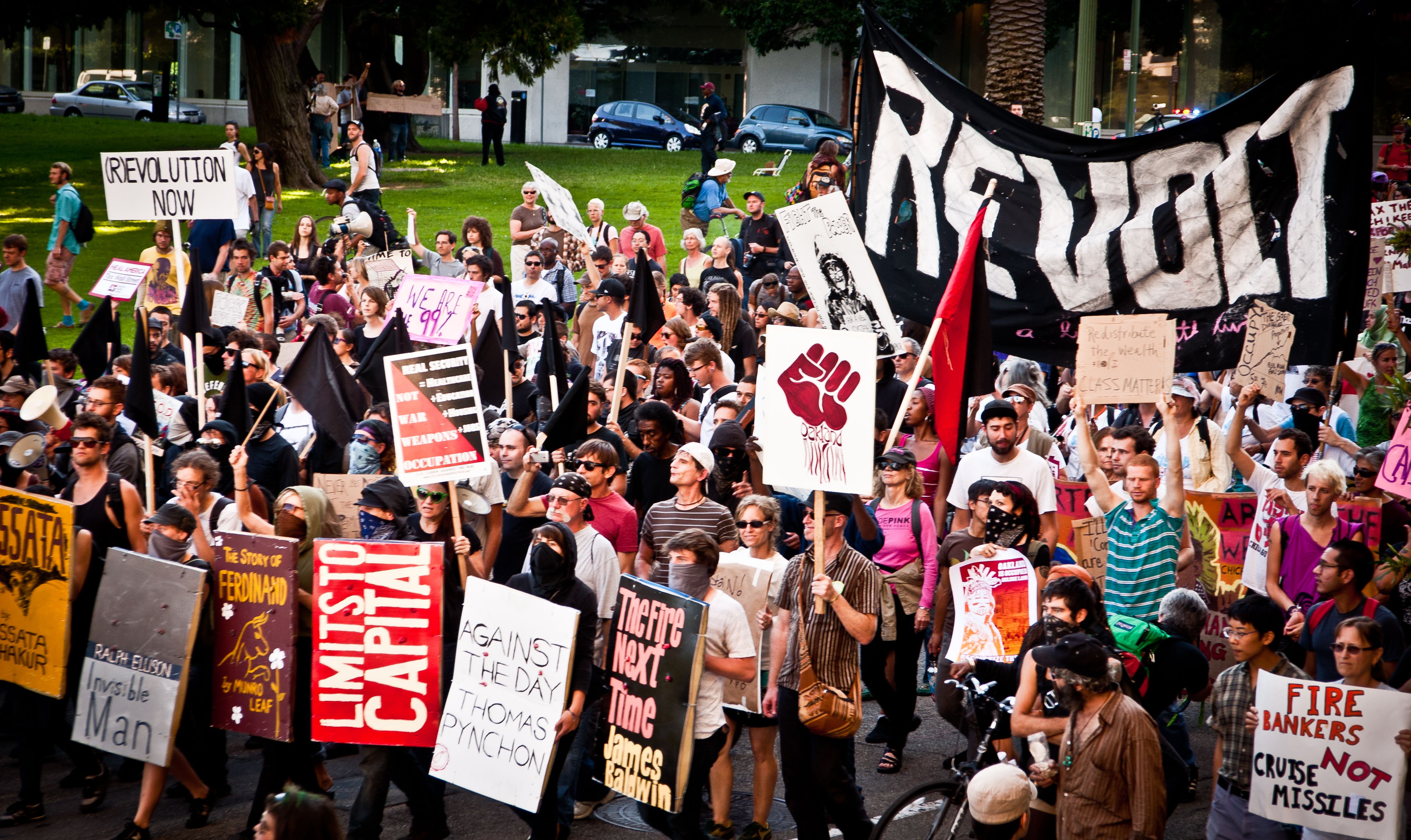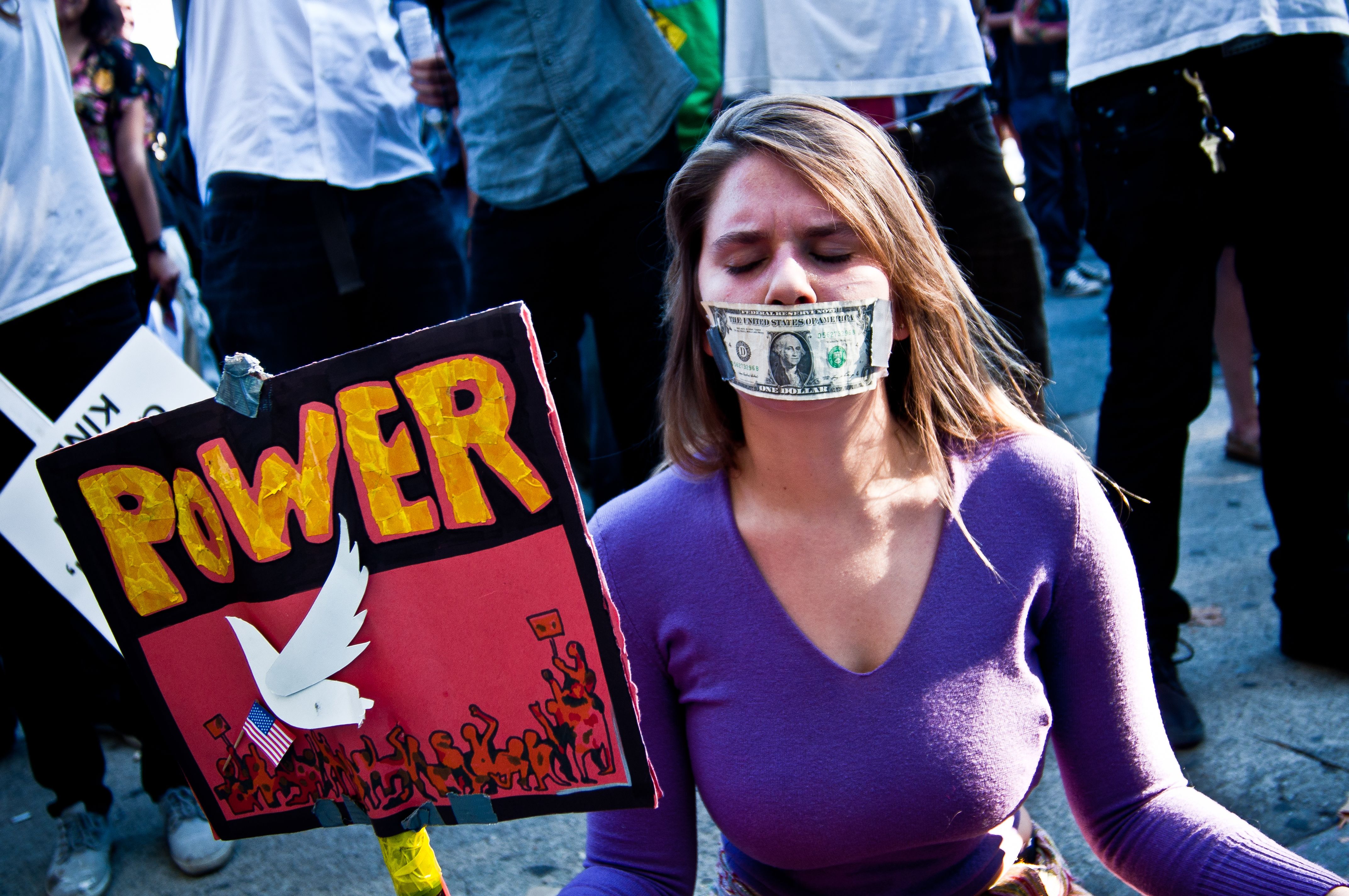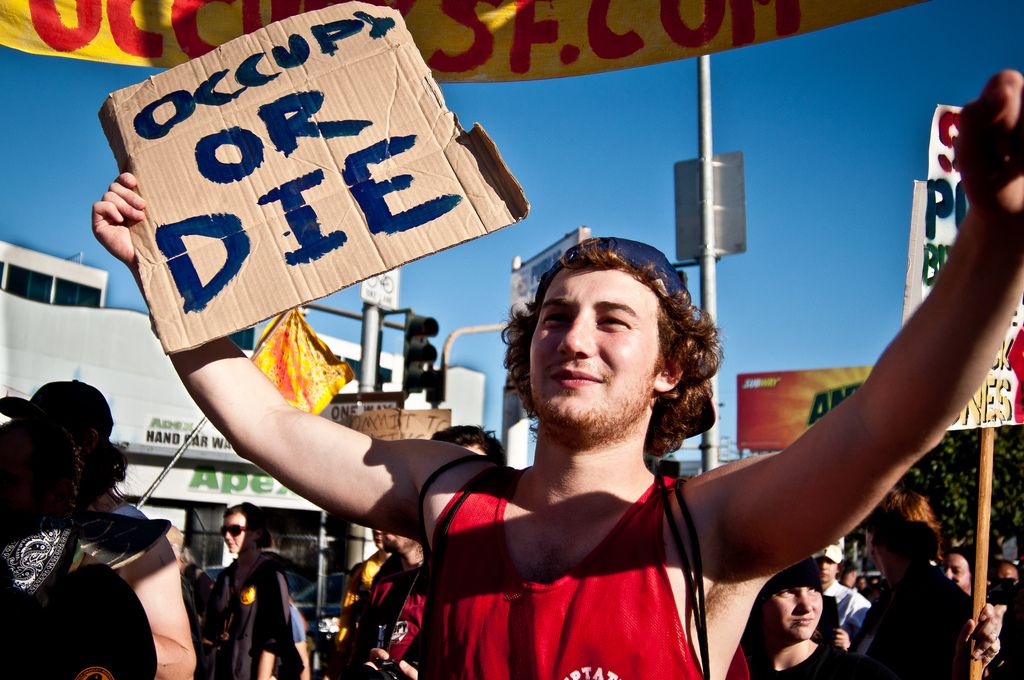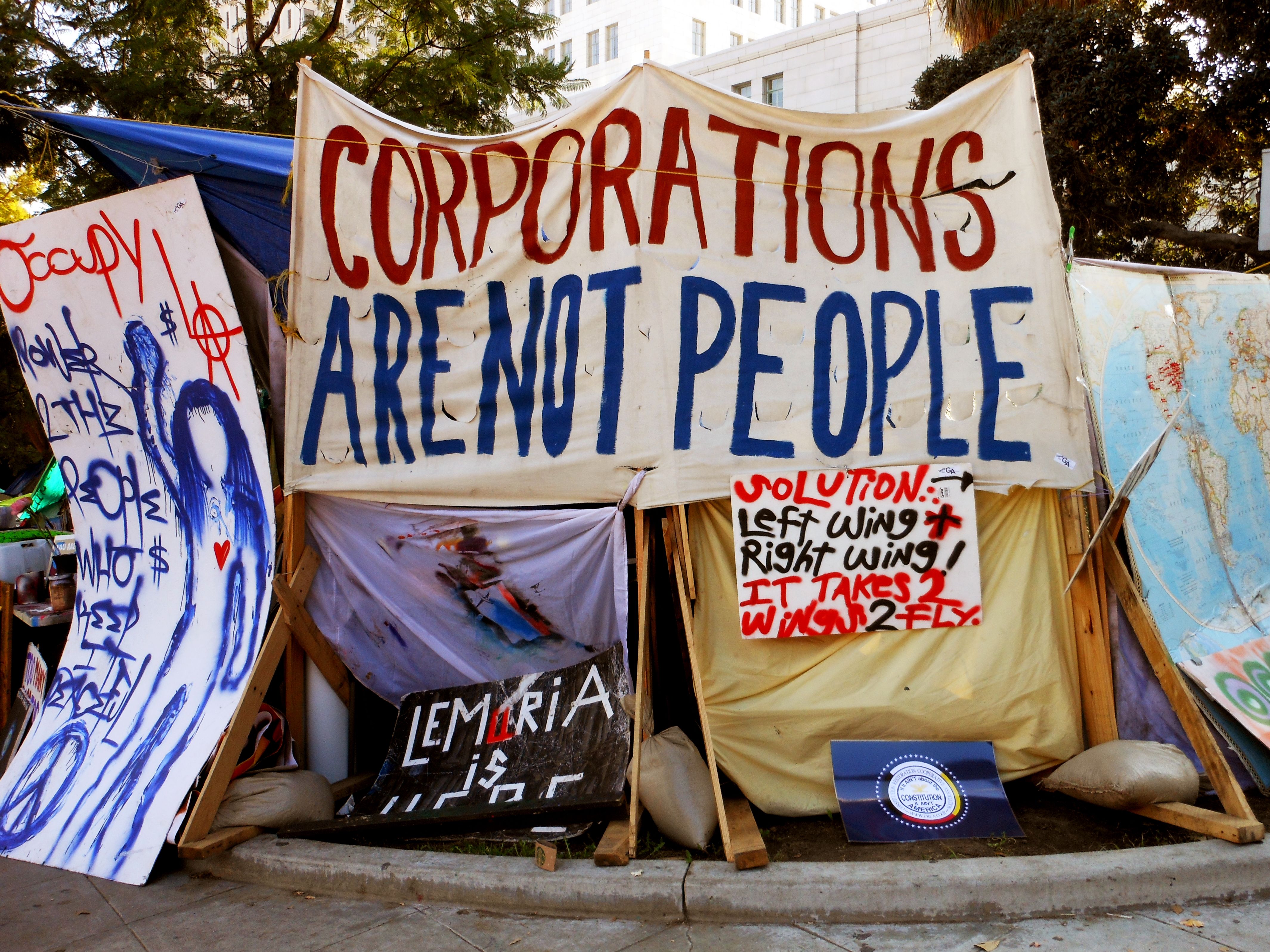Of all protests in recent years, the Occupy movement used a vocabulary that referred most directly to inequality. One of their most visible slogans was ‘We are the 99%’, a reference to a report from the US Congressional Budget Office, showing that, between 1979 and 2007, the top 1% of Americans with the highest incomes saw their incomes grow by an average of 275%.1
The Occupy movement is interesting because it succeeded in mobilizing large groups of people all over the world in only a few months. The momentum lasted for three or four months, after which Occupy disappeared almost completely from the public eye. Another interesting dimension of Occupy was that it did not have one single message, demand or agenda. What made so many people join the protest was a widespread feeling of dissatisfaction with a financial system that makes the rich richer, while keeping the poor in poverty. People related to the feeling of being exposed to forces they cannot control. As Occupy Wall Street say on their website: ‘Occupy Wall Street aims to fight back against the richest 1% of people that are writing the rules of an unfair global economy.’
Occupy Wall Street in New York, which began on 17 September 2011, was the first Occupy protest to receive wide media coverage. Within a month the movement had spread around the world. People in Hong Kong, Frankfurt, Amsterdam, Miami, London, Berlin and Sydney took to the streets. According to Occupy, there were 951 protests in 82 countries. With the help of their readers, the Guardian tried to map the protests and came up with 750 Occupy events worldwide.2 With the exception of violent clashes in Rome, the demonstrations were largely peaceful. The largest protest was in Madrid, arguably numbering half a million protesters. In October 2011, the Atlantic published 50 photos from the protests around the world.3 Occupy lived up to its name, as people occupied streets and squares, with many activists pitching their tents in front of mostly financial but also other institutions.

Faces
On the ‘We are the 99 percent’ blog you can see photos of people telling how they struggle to make ends meets, without being able to control things themselves. The blogs says: “We are the 99 percent. We are getting kicked out of our homes. We are forced to choose between groceries and rent (…) We are working long hours for little pay.(…)We are getting nothing while the other 1 percent is getting everything.”
It wasn’t long before a conservative counter blog appeared in the same photo format. The blog is called ‘We are the 53%’, a reference to a study that says only 53 percent of households in the US pay federal income tax.4 The 53 percenters portray themselves as the citizens who pay federal income tax, as opposed to the 47 percent of Americans who don’t. Or in their own words: ‘Those of us who pay for those of you who whine about all of that… or that… or whatever.’ ‘We are the 53%’ did not however develop into a full-scale movement.

The Occupy Wall Street movement itself was inspired by the series of protests in 2011 in Spain organized by the Indignants movement and others,5 and by the uprisings in Tunisia and Egypt.6 The Anonymous movement7 and Adbusters, the Canadian not-for-profit magazine famous for its spoof ads8, also put their weight behind the first protest on Wall Street. In general, the Occupy movement can be seen as an offspring of the anti-globalist movement that started in the 1990s.
The Occupy movement is a movement without leadership. The first sentence of its ‘statement of autonomy’ says: ‘Occupy Wall Street is party-less, leaderless, by the people and for the people. It is not a business, a political party, an advertising campaign or a brand.’ The most often heard criticism of the movement was exactly that: there is no leadership responsible, no clear goals being set, and no solutions being offered.

Is Occupy dead?
Now, in December 2012, the demonstrators in all major cities have left their camps. One of the last camps to be dismantled was in front of HSBC headquarters in Hong Kong. Occupy Frankfurt, one of the last camps in Europe, was evacuated in August. The camp on the doorstep of the European Central Bank was closed after it was claimed to be a danger to public health, attracting more homeless people than activists.

This does not mean, however, that the Occupy movement is over. Online, discussions are still thriving. In London, support for the Occupy movement came from an unexpected corner at the end of October 2012. Speaking at an Occupy Economics event Andrew Haldane, a representative of the Bank of England, is quoted in the Independent as saying that Occupy had been “successful in its efforts to popularise the problems of the global financial system for one very simple reason: they are right.”9 He added that protesters (…) “touched a moral nerve in pointing to growing inequities in the allocation of wealth”. The Independent continues: “Mr Haldane ended with a direct appeal to activists to continue putting pressure on governments and regulators. He said: ‘You have put the arguments. You have helped win the debate. And policy makers, like me, will need your continuing support in delivering that radical change’.”
Nor does it mean that widespread protest and social unrest is over, especially not in Europe. On 15 November 2012, for example, there were massive public strikes and demonstrations in Spain, Greece, Italy and Portugal and, to a lesser extent, protests in France, Belgium, the Netherlands, Poland and other countries in Europe. This was the first time such protests had been coordinated across several countries. They were organized by trade unions, together with other organizations. Occupy did not play a significant role and the vocabulary of inequality was not very apparent. The protests seemed to be focused more against direct spending cuts and austerity policies by governments.
Footnotes
- “CBO: Top 1% getting exponentially richer.” CBS News. 26 October 2011.
- The Guardian Data Blog, Occupy protests mapped around the world.
- “Occupy Wall Street Spreads Worldwide.” The Atlantic. 17 October 2011.
- Lowrey, Annie. “99 Percenters, Meet the 53 Percenters.” Slate. 11 October 2011.
- 2011–2012 Spanish protests. In Wikipedia.
- OccupyWallSt.org,
- Anonymous International on Facebook.
- Adbusters Spoof Ads.
- Hall, Richard. “Top Bank of England director admits Occupy movement had a point.” The Independent. 29 October 2012
